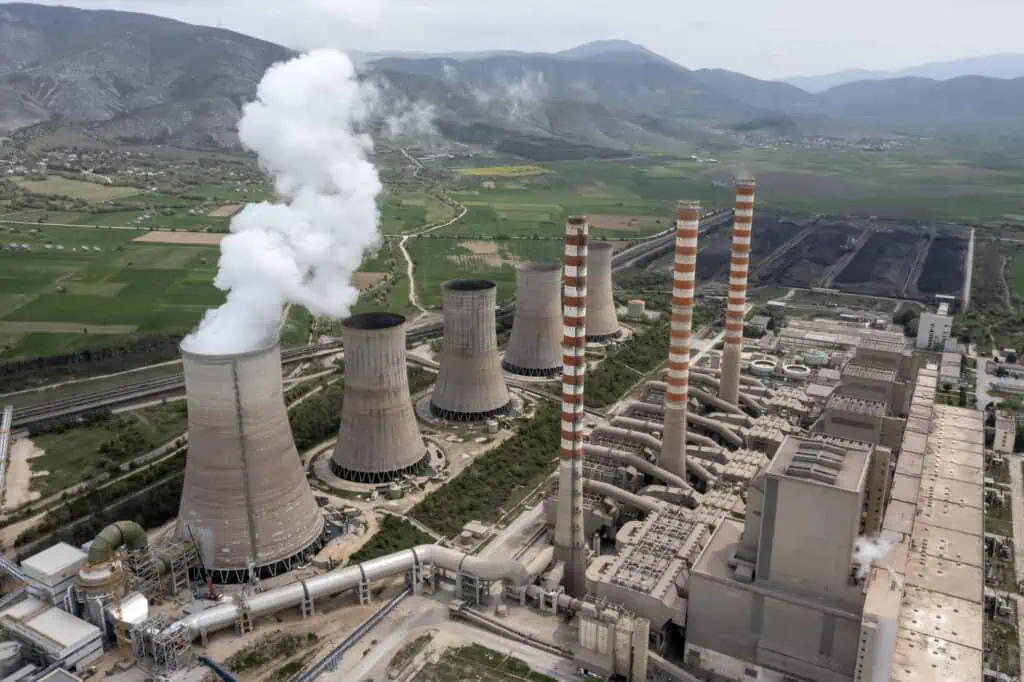Solar energy is one of the cleanest forms of renewable energy sources. It has taken center stage in conversations around the environmental effects of energy generation.
Understanding the role of solar power in greenhouse gas emissions becomes crucial.
And this is especially true now that the world is looking for ways to reduce our carbon footprint and slow the effects of climate change.
Contents
- 1 Understanding Solar Energy
- 2 Greenhouse Gas Emissions: A Global Concern
- 3 How Traditional Energy Sources Contribute to Greenhouse Gas Emissions
- 4 The Role of Solar Energy in Reducing Greenhouse Gas Emissions
- 5 Challenges and Solutions in the Adoption of Solar Energy
- 6 Economic Implications of Solar Energy
- 7 The Future of Solar Energy: Potential Impact on Greenhouse Gas Emissions
- 8 Solar Energy and Carbon Capture Technologies
- 9 Educating the Public on Solar Energy and Its Benefits
- 10 Fight Against Climate Change
Understanding Solar Energy
Solar energy refers to the energy we derive from the sun. It’s a renewable resource, meaning it won’t run out, unlike fossil fuels.
With advancements in technology, we’re becoming more efficient at capturing and using it.
How Solar Energy Is Harnessed
Solar energy is harnessed using solar panels. These panels are composed of many solar cells which absorb sunlight and convert it into electricity.
The greater the intensity of the sunlight, the more electricity the cells can generate.
Benefits of Solar Energy
The benefits of solar energy are multi-faceted. Here are some of them:
- Renewable. This means that it will never run out.
- Clean. It does not produce greenhouse gases or other pollutants.
- Versatile. It can be used to generate electricity, heat water, and power vehicles.
- Cost-effective. It is becoming more affordable as time goes by. It also gives a high return on your initial investment.
Greenhouse Gas Emissions: A Global Concern
The world’s activities have been releasing a large amount of greenhouse gases into the Earth’s atmosphere. One example of these activities is burning fossil fuels like coal and gas.
These gases, including carbon dioxide, trap heat. As such, it causes the planet’s temperature to rise. This is a phenomenon known as global warming.
Greenhouse Gases
Greenhouse gases are gases that absorb and emit radiant energy, leading to the greenhouse effect. They include carbon dioxide (CO₂), methane (CH₄), nitrous oxide (N₂O), and fluorinated gases.
The primary source of greenhouse gas emissions is the burning of fossil fuels for electricity, heat, and transportation. However, emissions also come from deforestation, industrial processes, and other activities.
Effects of Greenhouse Gas Emissions on Climate Change
The increased levels of greenhouse gases in our atmosphere trap more heat, leading to global warming. This results in a changing climate, with effects such as:
- Increased flooding
- Hotter temperatures
- More severe and frequent wildfires
- Sea-level rise
- Disruptions to wildlife
Connection Between Energy Production and Greenhouse Gas Emissions
Energy production from fossil fuels has significant environmental implications.
Traditional energy sources like coal, oil, and gas have propelled industrial progress. But these come at a high environmental cost, primarily in the form of greenhouse gas emissions.
How Traditional Energy Sources Contribute to Greenhouse Gas Emissions
Traditional energy sources, such as coal, oil, and natural gas, are the leading contributors to greenhouse gas emissions.
When these fuels are burned, they release carbon dioxide, methane, and nitrous oxide into the atmosphere. These gases retain the heat, which contributes to climate change.
As per the United States Environmental Protection Agency, here are the different sectors and their greenhouse gas emissions:
- Transportation
- Largest source of greenhouse gas emissions in the United States
- Accounts for 29% of total emissions in 2021
- Most of these emissions come from burning gasoline and diesel fuel in cars, trucks, and buses
- Electricity
- Second largest source of greenhouse gas emissions
- Accounts for 25% of total emissions in 2021
- The majority of these emissions come from burning coal and natural gas to generate electricity
- Industrial
- The third largest source of greenhouse gas emissions
- Accounts for 22% of total emissions in 2021
- The majority of these emissions come from the production of cement, steel, and other industrial goods
- Residential and commercial
- Contribute to greenhouse gas emissions
- Accounted for 14% of total emissions in 2021
- The majority of these emissions come from burning natural gas and heating oil for heating and cooking
The Role of Solar Energy in Reducing Greenhouse Gas Emissions
Solar energy has the potential to provide up to 11% of the world’s electricity by 2050. This would reduce global greenhouse gas emissions by six gigatons per year.
There are a number of ways that solar energy can help to reduce greenhouse gas emissions.
- Solar panels can be used to generate electricity on-site. This can help to reduce the demand for electricity from fossil fuel-fired power plants.
- Solar panels can be used to power electric vehicles. This produces zero emissions when they are driven.
- Solar panels can be used to heat water. This can also help to reduce the demand for fossil fuels.
The use of solar energy is growing rapidly around the world. In 2021, the global solar photovoltaic (PV) market grew by 23%. And it is expected to continue to grow in the coming years.
This growth is being driven by a number of factors. It includes the following:
- The falling cost of solar panels
- The increasing awareness of the environmental benefits of solar energy
- The support of government policies
The role of solar energy in reducing greenhouse gas emissions is significant. As the use of solar energy grows, it will help to reduce our reliance on fossil fuels.
Challenges and Solutions in the Adoption of Solar Energy
Solar energy presents a promising solution to our energy and environmental challenges. But even so, its widespread adoption isn’t without hurdles.
Despite its benefits, several barriers hinder solar energy adoption. This includes high initial costs, the need for abundant sunlight, and large space requirements for solar farms.
But with technological advancements and supportive policies, these challenges are being mitigated.
Potential Solutions and Strategies to Overcome These Barriers
Technological advancements are driving down costs and improving efficiency. Government policies providing incentives for solar adoption can also ease these challenges.
Additionally, community solar projects allow for shared access to solar power. This eliminates the need for individual homeowners to install their own panels.
Economic Implications of Solar Energy
The economic implications of solar energy are the following:
- The costs have fallen, making it competitive with traditional sources of energy.
- The long-term savings from reduced energy prices and maintenance costs can offset the initial investment.
- The shift towards solar energy can drive economic growth. As more individuals, businesses, and governments adopt solar energy, the demand for solar products and services increases.
- The solar industry is a major job creator and is expected to create millions of new jobs in the coming years.
- Solar energy helps to improve the local economy by reducing the need to import fossil fuels.
The Future of Solar Energy: Potential Impact on Greenhouse Gas Emissions
The future of solar energy is very promising. As technology continues to improve and the cost continues to fall, it will become an important part of our energy mix.
This will have a significant impact on greenhouse gas emissions and help to combat climate change.
Key Factors That Will Shape The Future of Solar Energy
- The increasing efficiency of solar panels
- Solar panels are becoming more efficient at converting sunlight into electricity. This means that solar panels can generate more electricity from the same amount of sunlight.
- The development of new solar technologies
- There are new solar technologies in development. These technologies have the potential to make solar energy even more affordable and efficient.
- These technologies include concentrated solar power (CSP). This uses mirrors to concentrate sunlight, and thin-film solar cells, which are made from lightweight and flexible materials.
- The growth of the solar market
- The solar market is growing rapidly around the world.
- The solar sector has attracted significant investment in recent years. This includes both private investment and public funding for research and development.
Solar Energy and Carbon Capture Technologies
This energy plays a crucial role in mitigating greenhouse gas emissions. It also plays a role in promoting the use of carbon capture and storage (CCS) technologies. These technologies prevent the release of carbon dioxide into the atmosphere.
The primary goal of carbon capture technologies is to capture the carbon dioxide produced during the combustion of fossil fuel energy.
Once captured, the carbon dioxide can be stored underground. Not only that, they can also be repurposed for other industrial applications.
Educating the Public on Solar Energy and Its Benefits
Given the benefits of solar energy, it’s important to educate the public about its potential. Raising awareness can drive increased adoption. And this can contribute to lower greenhouse gas emissions.
Understanding the benefits can lead to increased public support and adoption.
As more people become aware of how this energy can help combat climate change and reduce energy costs, demand for this renewable resource can be expected to rise.
Strategies for Educating the Public
Public education on solar energy can take many forms. This can include information campaigns for school curricula and community demonstrations.
Governments, educational institutions, and renewable energy companies can all play a part in raising awareness about the benefits of solar power.
Fight Against Climate Change
As we join forces in the fight against climate change, let’s remember the immense power of solar energy. Using the sun’s radiance not only allows us to break free from fossil fuels but also reduces our carbon footprint.
Embracing this energy is not just an investment. It’s an investment in a cleaner and more sustainable future for all.
By taking this step, we can create a positive impact on the present generation. We can also leave a legacy of environmental responsibility for future ones.
To deepen your understanding of the advantages of solar energy, we invite you to dive into our articles on this remarkable power source.
These resources shed light on solar power systems. It also highlights their pivotal role in combating climate change.
Let’s ignite change by exploring the vast potential of solar energy today. Together, we can pave the way for a brighter, greener, and more sustainable world!




